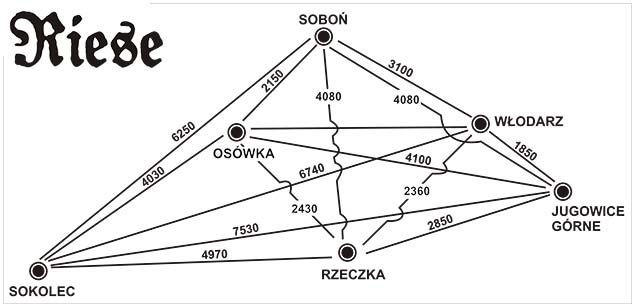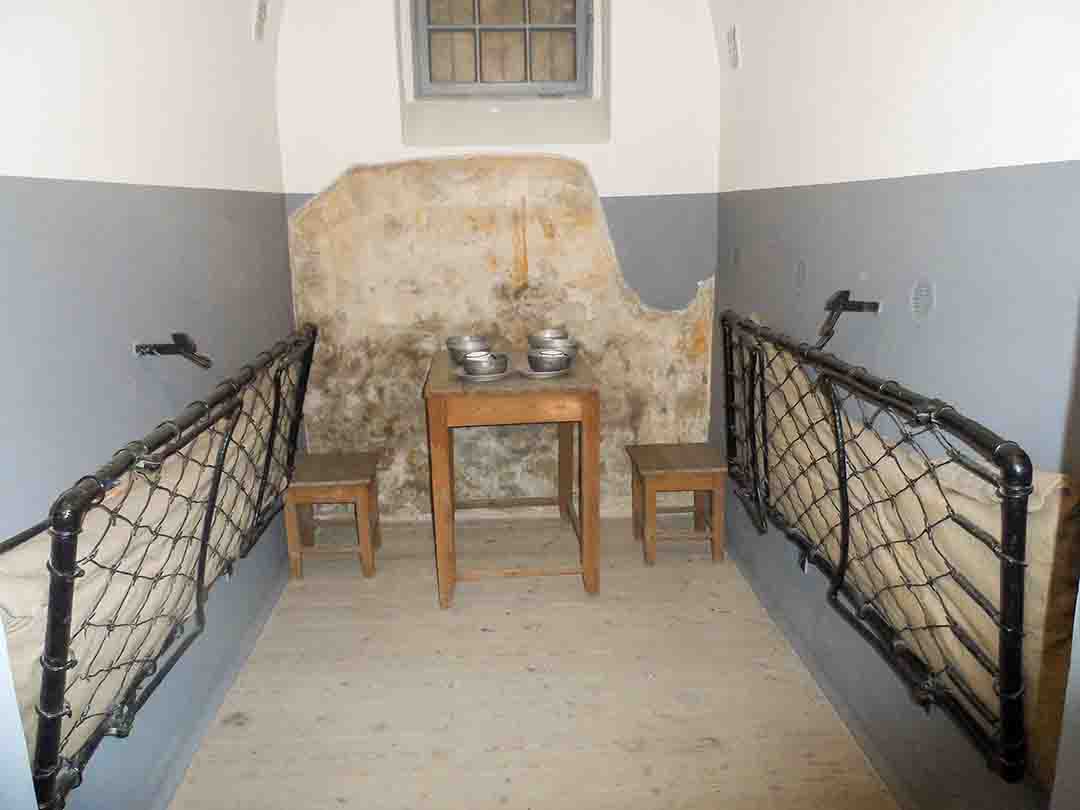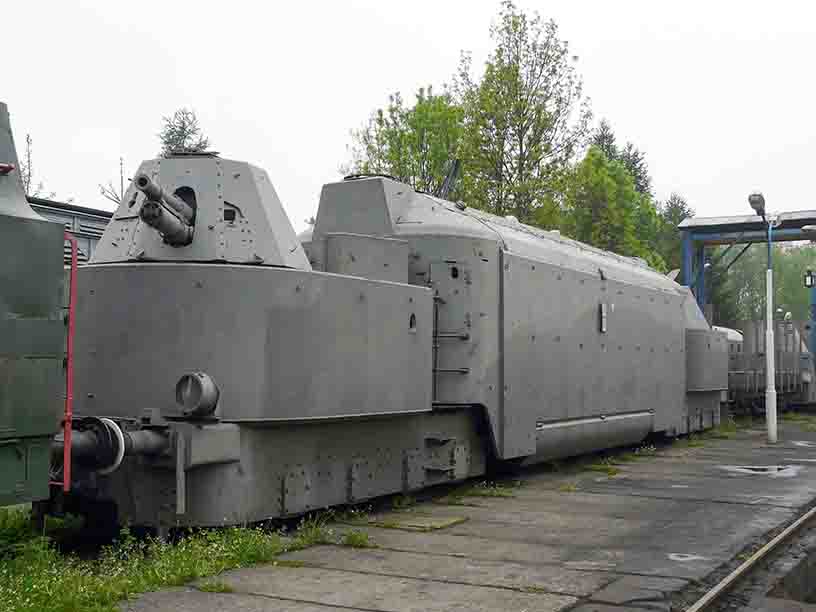World War II is not only about concentration camps, front-line fights, and the Pawiak (prison -ed.), but also about many, to this day unsolved, mysteries. One of the biggest is in the Owl Mountains (Góry Sowie). The Riese project, which is translated from German as "giant", is simply the code name for the Nazi's largest mining and construction project. The Germans started their unfinished mining work in the Owl Mountains and at the Książ castle. With time, however, not only the Książ Castle interested the Germans. In 1943 they started digging underneath it. Why? We don't really know to this day.

The Książ castle (Source: Wikipedia)
Hitler's special headquarters
According to Jonasz Witold Gałka Gałkowicz, professor at the University of Wrocław, the Sowie Mountains are in a very special way connected with the culture of the Celts. "As we know," says the professor, "Hitler and his closest staff were occultists." Apparently, it was in this place that the Nazi leader was to consult Celtic priests on how to continue the hostilities. So, as we can see, in the vicinity of Książ Castle, Adolf Hitler's headquarters were to be located.
To avoid bombing raids
In view of the increasing air raids of Allied bombers in 1943, the Owl Mountains attracted the Nazis who thought that this place was one of the safest places in the Sudetes. It was in this safest place that they wanted to locate the headquarters for, in their opinion, the greatest leader of Europe.
It was then that the project of creating the above mentioned headquarters and a series of huge bunkers hollowed in the rocks of the mountains was initiated. For this purpose, the company Industriegemeinschaft Schlesien AG was established, which took over several thousand prisoners under its control. They were placed in the first four forced labor camps, in the Riese complex.
Supervision of the works
The harsh living conditions of the aforementioned prisoners were not conducive to the satisfactory work that the Nazis were expecting. In April 1944, the supervision over the works was carried out by the German organization Todt. The plans for the construction of the Riese complex included huge executive and renovation works at the Książ castle and right under its edifice. At that time, huge tunnel spaces were created, hollowed out under the castle. The existing road network and the narrow-gauge railway were also reorganized. The construction engineering was carried out at the highest level here.
Several years of work
The executive plans of the aforementioned complex were drawn for several years of work. The creation of the aforementioned bunkers and shelters was to consume 150 million reichsmark. However, as we all know, these works were only partially completed.
Many underground structures that were made by prisoners for the Germans, shortly after the Red Army entered, were buried or blown up. As reported by prisoners who worked in the complex, the Germans blew up the underground tunnels and corridors so that the inlets on both sides were covered. Most likely, some of their treasures were stored there, which were to be recovered after the war. Did it actually happen... no one knows.
The Germans always thought that they would return to the places around the Kłodzko Valley and be able to use them further, which they used to until the outbreak of World War II. However, the fate turned out to be different.
Engineering work
Construction and engineering works related to the Riese complex covered an area of several dozen square kilometers. They were conducted on the slopes of the Wolfsberg (Włodarz), Saalberg (Jedlińska Kopa), Mittelberg (Jawornicki Department) mountains and on the Wüstewaltersdorf (Walim), Dorfbach (Rzeczka), Mulenberg (Moszna), Säuferhöhen (Osówka), Ramenberg (Soboń) and Schindelberg (Gontowa).
In these mountains, and more precisely in their slopes, holes were drilled and then blasted with explosives. In this way, some sort of tunnels were created, in other words, corridors, which were then reinforced with concrete supports. The corridor arches were reinforced so that they did not pose a risk of collapse. These tunnels and underground corridors were then equipped with powerful road, rail, water and sewage infrastructure, as well as telephone and energy infrastructure.

German map showing the distances (in meters) among the complexes comprising Riese (Source: Wikipedia)
Works at the Książ Castle
At the Książ castle, however, the construction and adaptation works resulted in the destruction of several rooms. This is especially true of decorative elements, such as ceilings, frames and floors. The aforementioned works also took place outside the castle itself. Therefore, it is worth mentioning that many huge buildings were created on the premises of the castle, the purpose of which has not been fully explained.
So, as it can be assumed, there would only be an underground road leading to the castle. It was accessible by car and through railway tunnels. Underground, two levels of exclusive rooms and chambers were established, connected with the cellars of the castle. The first of these underground levels is 15 meters (49 feet) underground. Its dimensions are approximately 80 meters (262 feet), 180 square meters (1938 sq. ft.), and 400 cubic meters (14,126 cub. ft.).
Walim – Rzeczka
Here we find three tunnels in the rocks, which are located on the eastern slope of the hill called Ostra. These excavations lead to parallel drifts, 45 meters (148 ft.) apart. Between them there are huge halls. Above the ground, a telephone exchange was established, the node of which was larger than the one existing in the city of Wrocław at that time.

The entrance to the Riese complex in Rzeczka-Walim (Source: Wikipedia)
Jugowice Górne - Jawornik
There is an underground complex carved in the Chłopska Góra massif. It consists of seven drifts. Interestingly, the fourth adit ends with a large-sized post-attack debris. As further guesses lead, the Germans collapsed this corridor on purpose, hiding "something" inside that was of great value to them. On the ground around this complex, there were a dozen or so brick barracks, the purpose of which was not precisely established.
Włodarz
This huge complex was established in the mountain massif called Włodarz. There are three entrances to it. The whole complex is a series of many corridors, and interestingly they intersect with each other at right angles. There is also one of the largest, unfinished halls in this place.
As we know, from the information provided to our editorial office by Mr. Stanisław Bińczak, a historian from Warsaw, in this place in the aforementioned hall, several thousand prisoners working on the construction site were murdered in the spring of 1945, in order to get rid of witnesses of the German engineering activities.
Głuszyca-Osówka
The underground in this place is created by three tunnels. One of them, considered to be the longest, is around 450 meters (1476 ft.). Another of them has dams made of brick construction that keep the water in the tunnel. Two facilities at this location are very intriguing, and they are called "casinos" and "gyms". These are, of course, huge above-ground facilities with a total area of 680 m² (7,319 sq. ft.) and 900 m² (9688 sq. ft.).

Underground city "Osówka" (szlakpodziemi.pl)
Soboń
Entrances to these underground structures lead from three sides. Of course, they are run by three fairly large tunnels, called "caverns" by the Germans. It is a relatively small complex with short corridors 700 meters (2,297 ft.) long. There are also several ground buildings and one bunker.
Sokolec complex
Sokolec is an underground complex carved in the massif of Mount Gontowa. There are two perpendicular complexes of underground, partially collapsed by the Germans with successive detonations. The complex was 850 meters (2,789 sq. ft.) long.
Great Owl
Eule commandos worked on the slopes of this mountain. Former prisoners who worked unloading and segregating building materials. Importantly, the real entrance to the Great Owl's network of underground tunnels has never been found.
Moszna
It is a complex of the so-called "uncertain" tunnels. Of course, successive excavation works were carried out here, because there are visible ventilation wells here until today. According to historians, it is a place of special purpose, even though no entrance has been found.
Workers of the Riese complex
The work of prisoners was used in the construction of the Riese complex. These were especially Jews destined for later liquidation. They came from the Łódź ghetto and from KL Auschwitz. Of course, they would soon die, so the Germans did not worry about keeping the construction of Riese a secret. They were deployed in camps not far from their place of work. The network of such camps was called Arbeitslager Riese. Albert Lütkemeyer was the commandant of this camp. Several transports of 70 men were transported to this camp in 1944.
Who was Commandant Lütkemeyer?
Albert Lütkemeyer was born on June 17, 1911 in Wellingholzhausen. He died on June 26, 1947 in Hamelin. He was a German Nazi criminal. A carpenter by profession, he joined the NSDAP party in 1933. The following year he was active in the SS. He served in German concentration camps from 1934, initially in Esterwegen. After the war, he was tried by the British Military Tribunal in Hamburg. His trial took place from February 27 to March 7, 1947. He was sentenced to death by hanging.
Inaccuracies in German documents
As it was calculated, there were several thousand worker-prisoners at the Riese complex. German documents undercount the number of such workers by at least half. Historians have managed to establish the names of over 7,000 of them.
The work of the prisoners was extremely hard. They dug tunnels inside the mountains. They built railroads and also handled building materials. Their mortality was high. It was not only due to hard work, but also malnutrition and difficult living conditions... and, of course, bad treatment by their torturer-overseers.
A large part of the underground tunnels is closed. In 1995, a sightseeing route was opened in the "Rzeczka" complex, transformed in the spring of 2001 into the Walim Adit Museum.
The "Riese" project is one of the greatest secrets in the Owl Mountains and Lower Silesia. To this day, the purpose of the construction is not entirely clear. The various theories surrounding this place only ignite the imagination.








